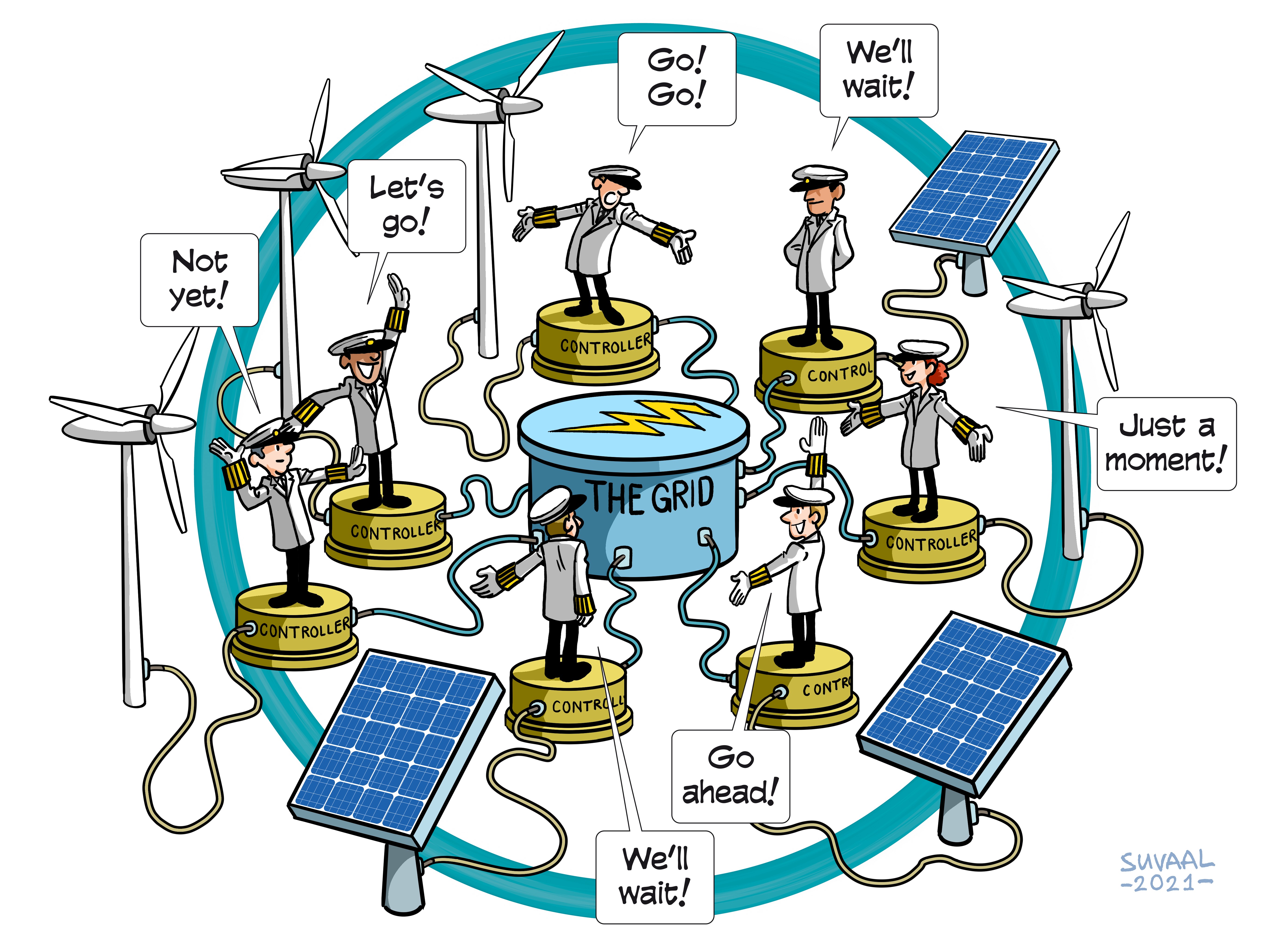EASY-RES - Enable Ancillary Services by Renewable Energy Sources
Research Themes: Energy, Software Technology & Intelligent systems


A TRL is a measure to indicate the matureness of a developing technology. When an innovative idea is discovered it is often not directly suitable for application. Usually such novel idea is subjected to further experimentation, testing and prototyping before it can be implemented. The image below shows how to read TRL’s to categorise the innovative ideas.
Summary of the project
In the past we had large fossil fuel fed generators that produce a lot of energy on a stable, robust, controllable and predictable way. With the increased generation of renewable energy we are downsizing in terms of scale – there are many more units that feed into the network with increase variability and uncertainty. This causes power volatility, large frequency deviations and voltage regulation problems which are challenging to manage. The researcher aims to improve the technical characteristics of the renewables so they mimic the behaviour of a conventional generator – by developing ways in which they can aggregate the behaviour of many solar panels or wind turbines. With electrical power engineering, control theory, ICT, algorithms and other methodologies he is building controllers for the renewables.
The idea is to develop a controller – embedding intelligence - for each individual panel or turbine in the system so they can control and synchronize with the others in such a way that they can act together. The controllers act based on what is happening in the network – for example high-fluctuations in sunlight and wind, or changes in electrical frequency of the electricity grid. This creates the option to install batteries or other energy storing mechanisms in the network where energy can be stored or retrieved when necessary. On a higher level the researcher also aims to keep the communication between the controllers as simple as possible to avoid dependencies on the ICT network and so the controllers can (re)act as quickly as possible. The biggest challenge is to develop controllers that can simultaneously do multiple things.
What's next?
The next step is to move from the technical development into the more regulation and market developments. These controllers do not exist yet. They need to build these controllers at low cost And it would be preferred for the controllers to have a dimming function so the spilling of energy can be reduced developing new services.
Contribution to the Energy transition?
With the development of these controllers the volatility of a renewably fed energy system can be more easily managed to ensure a steady supply of electricity to every socket in the network.
Dr. Milos Cvetkovic
Dr. Aleksandra Lekic
Dr. ir. Aditya Shekhar
Prof. dr. Peter Palensky
Aristotle University of Thessaloniki
University of Seville
Faculties involved
- EEMCS
